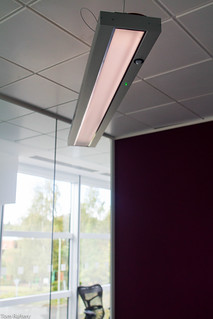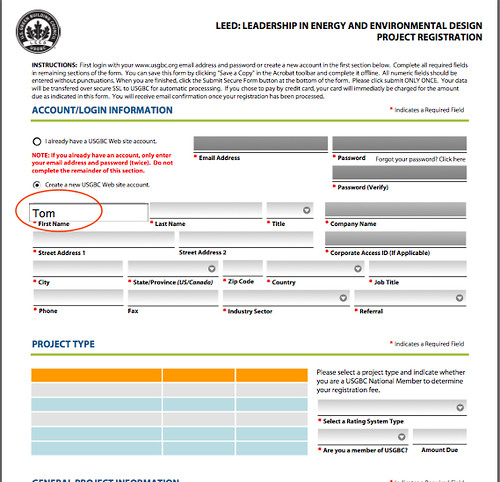Autodesk UK recently moved offices to a facility in Farnborough. In their previous offices, they had occupied several floors, so they set out to find offices where all their staff could be on the same floor, and yet have plenty off access to light. Also, they wanted to drastically reduce their footprint, so they to great care to make the office as green as possible (given that it was a retrofit, not a new build) and they have applied for LEED Gold certification for the office.
I visited with Autodesk in Farnborough last week and I was extremely impressed with the steps they have taken, as well as with the pride Autodesk rightfully show for the ongoing benefits of this project.
Some of the highlights:
The construction
94% construction waste recycled/ diverted from landfill
All energy/water consumption measured and monitored on site
The site was registered with the Considerate Constructors Scheme and achieved a score of 34 (85%)
Materials
High percentage of FSC timber sourced
All new furniture contains high % recycled/recyclable content. Re-used old furniture items where possible and ensured all unused items were diverted from landfill (e.g. donated to charity)
All paints, sealants and adhesives have been sourced with a low Volatile Organic Compound (VOC) content, to minimise chemicals and maximise occupant well-being
Selected new materials with high recycled content
A high proportion of new materials have been manufactured within 500 miles
Office
Secure bicycle racks, lockers, shower and changing facilities are provided for cyclists
10% of parking spaces are allocated to car sharers
Water consumption has been reduced by at least 20% through the installation of water efficient taps, shower fittings, WC’s and urinals.
Occupancy sensors have been installed on the lights for more than 90% of the lighting load and daylight controls on more than 50% – meaning that lights are not left on or are lighting areas unnecessarily.
Air conditioning equipment has been zoned in order to provide control to suit requirements for solar exposure and ensuring employee comfort
Recycling facilities have been built into the layout to ensure recycling wherever possible
All new electrical appliances are Energy Star rated
Desks have been located to try and maximise natural daylight and external views
The company also has a 6 seater TelePresence suite to reduce the amount of business travel it’s employees need to do. And Autodesk facilitates employees who wish to work from home – so much so that around 50% of their staff take advantage of this – reducing Autodesk’s property footprint, and the number of commute miles its workers undertake.
Autodesk’s Singapore office was awarded LEED Platinum certification earlier this year – with any luck when I’m in Singapore in November I’ll get a chance to check it out!
Full disclosure – Autodesk is not a GreenMonk client and the trip to visit AutoDesk’s Farnborough facilities was undertaken entirely at GreenMonk’s expense.
Image credit Tom Raftery
Follow @TomRaftery





